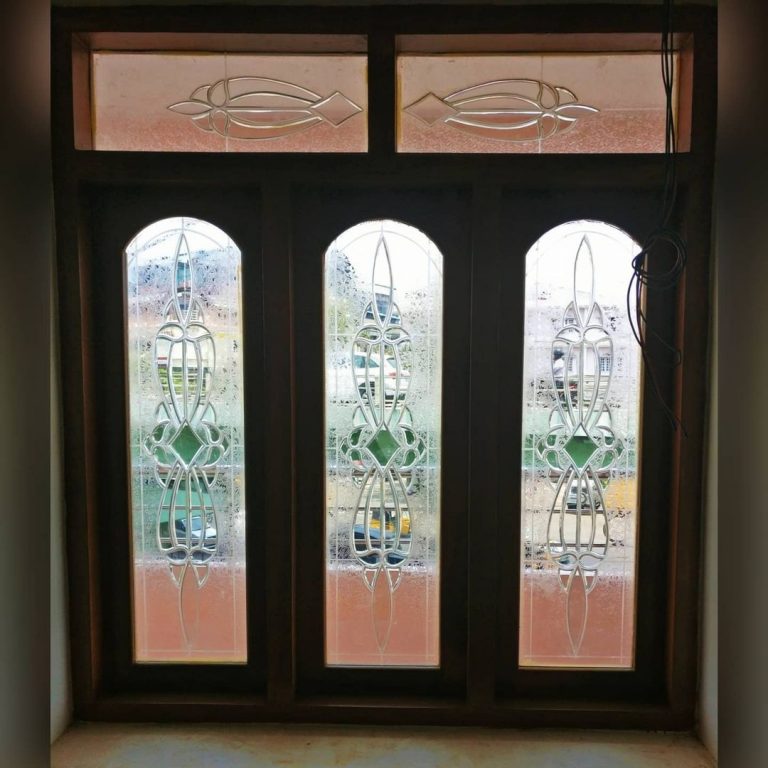

Beveled glass is often created by cutting an angled surface around the full edge of thick glass.
In sunlight, bevels behave as prisms, causing intriguing colour diffraction that both accentuates the glass work and provides a spectrum of colours that would otherwise be absent in clear float glass.
Beveled glass has a wide range of applications.
It’s found on doors, mirrors, tabletops, furniture and more.
It’s most common use is on doors, especially where a door has an intricate design etched or carved into it, adding a plain bevel to the edge creates an attractive finish all around.
Recently, bevelled glass feature walls and splashbacks have become popular in Australia.
During the nineteenth century, bevelled glass became fashionable in building and design.
Americans instantly embraced it and began developing the most artistic and high-quality designs.
It reached the pinnacle of popularity and art in 1890.
Beveled glass was a common feature in domestic building from the 1870s to the 1920s.
It was known to be an elegant addition to a home, speaking to the home-owners’ grace, class, and finances.
Beveled glass was initially produced by hand using a rotating wheel of stone or a textured metal such as cast iron.
The edges were sanded down carefully to achieve the proper angle around each component.
The glazier would employ a slurry of sand and water at the same time the wheel was rotating.
Texture vs. texture was a crucial factor in high-end manufacture.
A stone wheel was also used to smooth the glass, and finer sand was employed until the texture seemed smooth to anyone who ran their touch along it.
The earliest polishing procedures were using a wooden wheel with a fine pumice stone.
The creator worked the pumice into it until it gleamed.
Finally, brilliance was obtained by working the object against a covered wheel with pumice or ferrous oxide.
Modern bevelled glass is manufactured by machine.
The invention of plastic-based metal deburring wheels, which allowed appropriate smoothing of the ground glass face without the challenges associated with traditional aluminium oxide and natural sandstone smoothing stones.
Bevelled glass is 10-15% more expensive than regular glass which is cut with a straight edge. The cost can go up significantly if you are after bevelled glass with complicated designs.